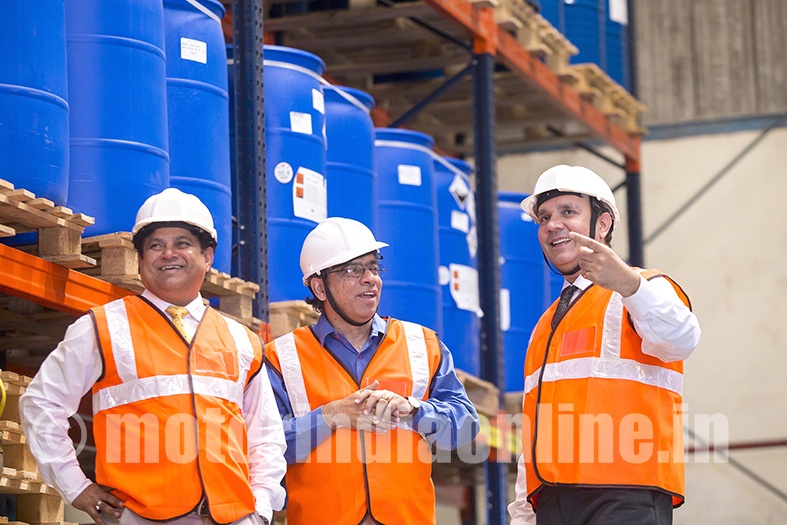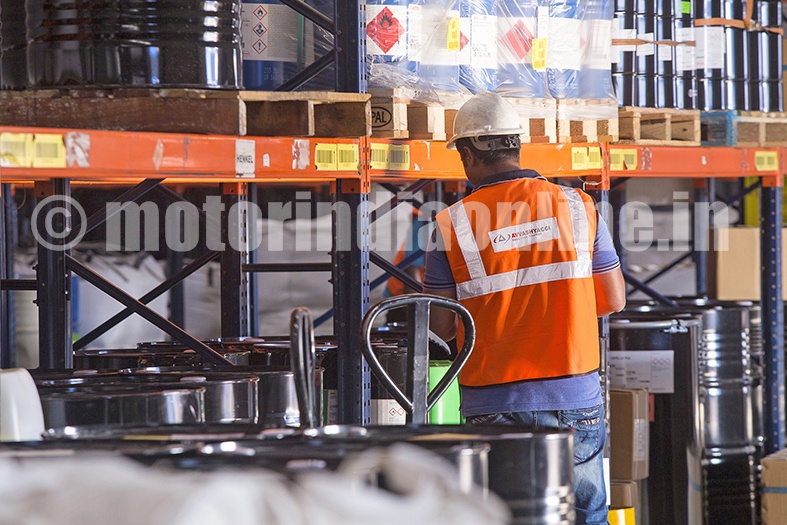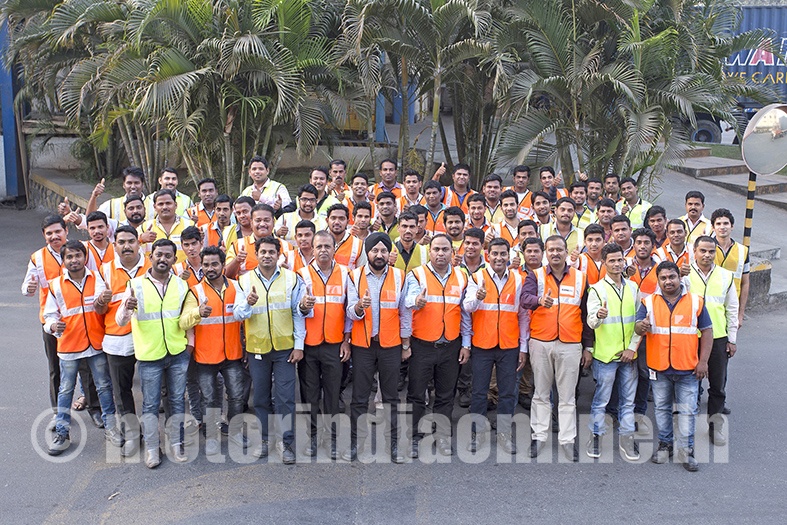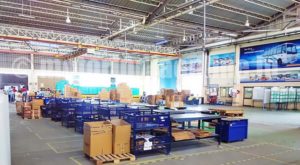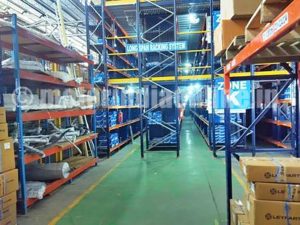The Avvashya Group, comprising logistics major Allcargo Logistics, ECU Worldwide and having a joint venture agreement with the CCI Logistics Group, provides end-to-end solution in the contract logistics space under the new entity – Avvashya CCI Logistics. We caught up with Mr. Balaji V, CEO, Contract Logistics, Avvashya CCI Logistics Private Ltd. to know more about the challenges in the business, changing trends in aftermarket supply chain space, edge that Avvashya CCI brings to the table, changes expected due to GST and the way forward for the industry.

Excerpts:
What is your perspective of the supply chain of the aftermarket industry for commercial vehicles in India?
The Automotive Mission Plan 2026 estimates the aftermarket spare parts revenue in the auto industry to grow from Rs. 39,900 crores (2015) to Rs. 200,000 crores by 2026. Such growth will largely be driven by the ‘Make in India’ initiative. If we assume that 40 per cent of this revenue is from commercial vehicles, the revenue from the spares business will approximately be Rs. 80,000 crores, a big market by any standards. This market will largely be driven by service quality and efficient response time to customer requirement.
The Supply Chain model for parts will change in the coming years and move from the traditional dealer / distributor model to a hybrid of the traditional and the new Market Place model (akin to E-COM), directly terminating at the point of consumption (service center). Logistics will thus play an important role in supporting the Aftermarket Spare Parts business for the auto industry in India. Logistics Service Providers (LSPs) performance will be largely measured by the TAT time to deliver the part to the consumer. OEMs will graduate towards partnering with organized logistics service providers who have the financial and the operational capability.
What has been the challenge in managing aftermarket (products and components) for commercial vehicles? How do you address it?
The aftermarket spares business is now imbibing the features of the E-com delivery model whereby the OEMs are committing stringent TAT time to their customers (owners of vehicles) always. OEMs are even going to the extent of monetarily compensating the end consumers in case of a service level failure. LSPs will have to build a Sense and Respond model to support the OEMs. Traditional operational models will be replaced by automated & engineered operational logistics processes.
Automation will be aligned across the supply chain in:
- Movement of material (GPS based with committed delivery TAT time)
- Storage & handling of material in the warehouse (Automated storage like ASRS / miniload systems, PTL systems for picking, automated packing systems, conveyors / sorter mechanism for movement within the warehouse)
- Inventory visibility (WMS-based systems with tracing and tracking mechanisms)
- Integration of the aftermarket supply chain with technology for better planning of inventory
Investing in operational capabilities and technology will drive LSPs performance. LSPs capability to offer value-added services will be the differentiator. VAS could be anything from packaging, preservation, kitting, servicing of VOR / ACC orders, inventory visibility, accuracy and management.
How has the market evolved in the last five years?
After Market Spares is a high margin business for the OEMs. The supply chain model for aftermarket spares is being drawn differently and OEMs recognize that they cannot maintain the same model they have for the product. Inventory Management across the supply chain is moving from a push to a pull-based system across the supply chain and inventory turns has increased. Logistics of aftermarket spares is getting more advanced and organized. There is an acknowledgement by the OEMs that logistics of aftermarket spares is a specialized service and therefore the selection criteria of an LSP are more stringent. Fly by night operators are now being phased out of the market and experienced LSPs are being taken seriously.
How are you looking at the market with GST around the corner? What is the way forward and areas of improvement?
The current Indirect tax regime in India provides for a complex tax environment due to multiplicity of taxes, elaborate compliance obligations and tax cascading. As of now the depots/warehouses/C&F agents are located at multiple locations. Various bottlenecks and complexities involved in transportation of goods using road logistics from one State to another burden the sector.
GST is expected to change the scenario. From the Indirect tax perspective, the whole country will be treated as ‘One Market’ and will add to operational efficiencies. One could expect the logjam at check-posts, etc., to be eliminated. Companies will no longer be required to have depots/warehouses at multiple locations and may also do away with C&F agents. Companies will be able to consolidate their warehousing infrastructure and benefit from lower costs incurred in the supply chain.
The operating efficiency of the road logistics sector is also expected to improve. Avvashya CCI as an organization is forward driven and has GST-ready global compliant infrastructure at strategic locations. The end to end integrated logistics solutions, forward and backward integration services and after market (SPD) and in plant expertise that ACCI offers will enable clients to ease their operations post GST implementation.
How has Avvashya Group – All Cargo Logistics Avvashya CCI (ACCI) Logistics eased the management of aftermarket products for commercial vehicles across India?
ACCI’s offers specialized solutions of network optimization and thereby help OEMs locate the warehouses at strategic locations to fulfill demand of the spare parts. ACCI has the necessary tools of network optimization and the engineers work alongside with the customers to design a robust network. By providing an optimum network design ACCI’s solution addresses the issue of transportation cost which contributes to approximately 60-70 per cent of the total spareparts logistics cost.
ACCI Logistics has the capability of designing and building the warehouses, setting up and managing of operations to suit the aftermarket spares business for the auto sector. By designing the storage solutions and adopting technology in operations, ACCI has enhanced the orders processing TAT time in the warehouse. This is done by two means:
- Using compact storage and retrieval systems the space required in the warehouse is optimized.
- By integrating WMS with the storage, Put to light (PTL), Auto pack systems & Sortation systems material flow is easy, accurate and efficient. This reduces multiple touch points of parts and thereby eliminates errors and non-value added time in operations.
ACCIs capability in providing solutions to handle VOR / ACC orders is unparalleled in the industry. In all its operations, ACCI handles such orders through a “Green Channel & on the Run.” This has significantly increased the TAT promised by the OEM to its customers, thereby improving the customers CSAT scores.
ACCI has invested in training of its people, including the floor staff. This ensures that the skills set of the entire workforce is in line with the on-ground need of the hour and thereby sustaining the level of excellence in operations. The company has institutionalized its training program “Kaushalya” in co-ordination with best-in-class trainers in industry to this effect.
